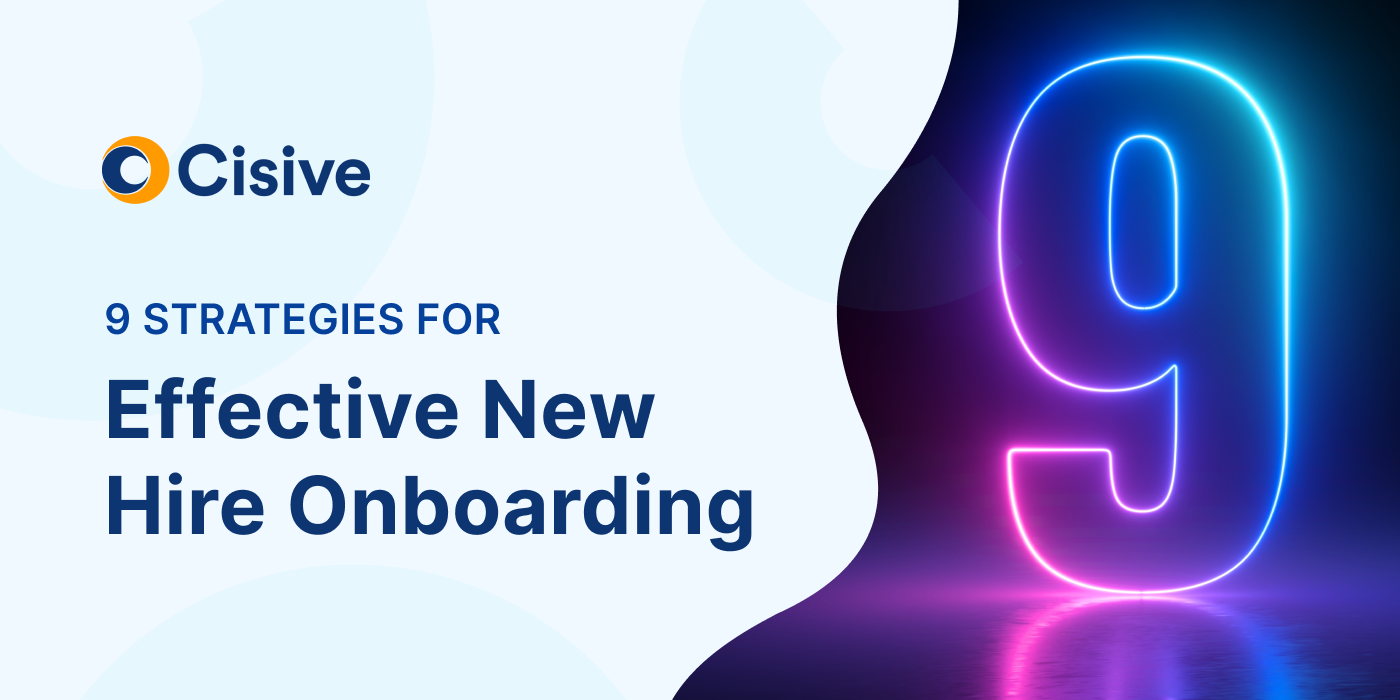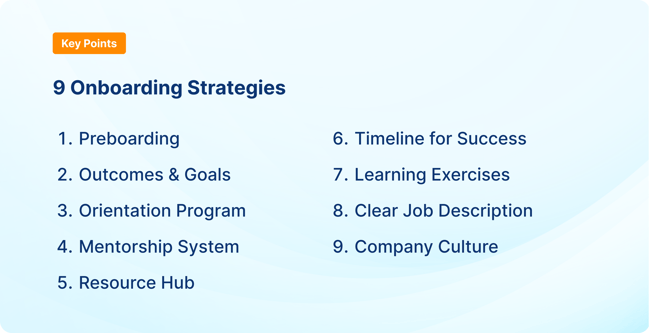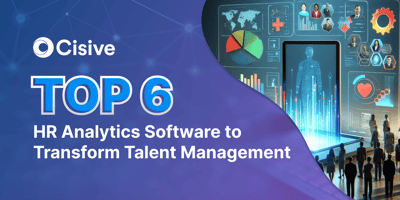

It’s hard to measure the cost of a bad hire. You must factor in the money you spent hiring and...

New hire onboarding is critical to helping your new employees integrate into the company. To make the most of this transition period for your new hires, it’s important to have a strategy in place.
This guide provides effective tips to help you develop an ideal onboarding strategy for your organization. It covers the following topics:
Employees who have a great work experience during the first 90 days on the job are 10 times more likely to stay with the company. Despite this, more than 60% of organizations don’t have an onboarding strategy in place.
At a time when many organizations are struggling with the ongoing labor shortage and growing skills gap, taking steps to improve employee retention is paramount.
Key TakeawaysHere’s what you need to build effective onboarding strategies:
|
Organizations use onboarding strategies to help new hires transition into the workplace, including integrating into the company, culture, and their role. The goal is to create a seamless and positive process for new employees.
While new hire onboarding includes basic steps, such as reading company policies, signing paperwork, and taking a tour of the location, it involves so much more. When done right, onboarding can help new hires better understand their roles and responsibilities and make them feel part of the team.
Whether you realize it or not, you likely already have some type of onboarding strategy in place.
For some organizations, onboarding consists solely of having the new hire complete the required paperwork. However, this limited effort doesn’t help to enhance the new hire’s experience or prepare them for their role.
On the other hand, when you have a comprehensive onboarding process in place, it can provide several benefits, including:
While this is not an exhaustive list of ideas, below are the top nine tips for building an effective onboarding process at your organization.

If you’re waiting until your new hire’s first day on the job to make a connection, you’re wasting invaluable time. An effective onboarding approach should begin when the candidate accepts the job offer.
Any job offer acceptance should be immediately followed by a welcome email to the new hire. This letter can include critical next-step information and begin the engagement process.
For instance, you can provide a checklist of all essential forms that must be reviewed and completed before they start. You can also include a list of important documents the employee should bring on their first day, such as official identification, Social Security number, and banking information.
Making this connection as early as possible can help make a positive first impression and enhance the candidate experience. It can also help alleviate some first-day anxiety your new employee may feel.
The last thing you want to do is spend time and money acquiring the right talent and then fail to set clear goals and expectations. Never assume that your new employee understands what’s expected of them or what the company’s goals and vision are.
Instead, use the employee onboarding process to ensure your employees understand job-specific goals and company-wide objectives. Set clear goals and objectives for each new hire so they know exactly what’s expected of them.
In addition to setting goals, it's important to explain what tools the company uses to measure outcomes. For example:
Recommended Reading: What You Need to Know About High Volume Hiring
New hire orientation is a big part of employee onboarding. This stage involves introducing new hires to your company, culture, and specific roles.
Don’t underestimate the importance of orientation for new hires. While a simple welcome letter or tour of the company is a good first step, it’s not enough to integrate your new employee to the company culture.
Instead, orientation should be a well-thought-out program that introduces the new hire to the company and makes them feel like part of the team. This could include:
A mentorship program can be a powerful tool that helps new hires integrate into your company and roles faster. It works by partnering each new hire with a seasoned employee.
This is not the same thing as an apprenticeship, where the mentor may not necessarily provide training. Instead, the mentor's role is to help answer questions about company policies and procedures or let the new hire know who to ask to get the right answer.
The mentor can also introduce the new hire to coworkers and explain the hierarchy structure in the company. When implemented and managed properly, mentorships can improve the new hire experience, speed up time to productivity, and boost overall retention rates.
In many cases, new hires must retain large amounts of information in a relatively short period. It doesn’t take long for the onslaught of information to become overwhelming.
You can keep your new hires from becoming frustrated while saving your HR team from repeatedly answering the same questions by creating a resource hub. Whether searching for information about health benefits, vacation pay, or paid time off, having a resource center that contains all relevant information can keep your new employee connected.
Creating an effective onboarding process means having a plan in place from start to finish. This means that you should plan every stage of the onboarding process.
For example, your preboarding stage should start from the instant the candidate accepts a job offer until their first day on the job. This could be 2 days, 2 weeks, or 2 months, depending on your company's requirements.
On the other hand, the orientation period could last just a few days or for several months. It’s important to understand the needs of your company and to develop an onboarding timeline that ensures all these needs can be met within that time frame.
New hire training is one of the most important components of the employee onboarding process. Each new hire must complete all training modules before being left on their own.
When determining what learning exercises to use with your new hires, think about what’s most important to your company and what skills are needed to be successful on the job.
For example, if you operate a manufacturing plant, safety training is paramount. However, if you manage an accounting firm, ethics and procedural training may be most important.
If you’ve given your new hire a copy of their job description, does this description truly describe their exact duties and responsibilities?
Take the time to review your job descriptions. Interview current workers and supervisors to better understand exactly what the job role requires.
Additionally, make the most of your exit interviews by asking exiting employees what they wish they knew about the position before accepting the job. This combined information can help you update your job descriptions to ensure they provide clear and accurate information.
Recommended Reading: Employee Offboarding Checklist for Easy Exits
When creating your onboarding strategies, it’s crucial to incorporate your company culture. In fact, your company culture should remain consistent and relevant throughout the entire onboarding process.
For instance, if your company culture focuses on collaboration and teamwork, it’s important to feature this concept throughout the onboarding process. By keeping all aspects of your company culture consistent, you can work toward building trust with the new hire.
While a strong onboarding approach is an invaluable component of the hiring process, there are other key strategies, such as:
Recommended Reading: Your Go-To Guide for Employee Offboarding Success
A comprehensive onboarding strategy is a critical part of the overall hiring process. Helping your applicants make the transition from candidate to new hire can improve the employee experience and retention rates.
To help with this process, Cisive can provide effective resources and services to make hiring the right candidates easier. Speak to one of our Cisive experts today.
A: The onboarding process can last just a few days, several months, or for the new hire’s first year. The important thing is to create a comprehensive onboarding process that can fully integrate your new hire into the company culture and role.
A: The three primary components of the onboarding process include:
A: The most important step of the onboarding process is new hire training. It’s critical that your new employees know exactly what’s expected of them and how to handle all tasks before being left alone on the job.

It’s hard to measure the cost of a bad hire. You must factor in the money you spent hiring and...

The 4 C’s of onboarding help companies minimize costs associated with new hire training by...

Most companies use data to drive decisions as much as possible. Metrics help guide leaders on...